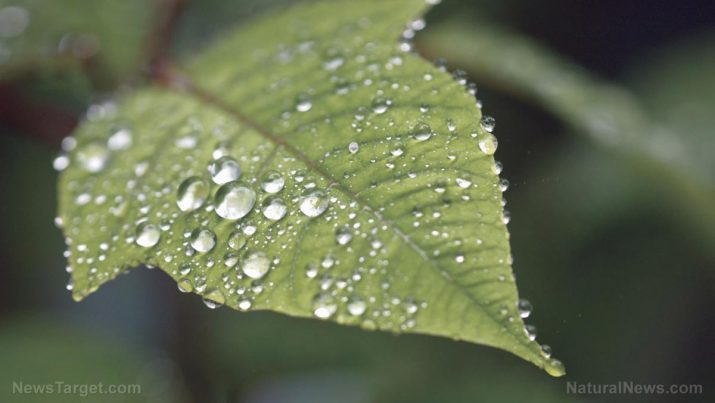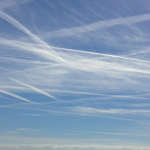
AEROSOLS: Tiny particles found to have a big impact on weather
Thursday, February 22, 2018 by Jhoanna Robinson
http://www.geoengineering.news/2018-02-22-aerosols-tiny-particles-found-to-have-a-big-impact-on-weather.html

Tiny particles contribute to the making of powerful storms and affect the weather in more ways than one, a study that was published in the January 26 issue of the journal Science showed.
While it is not news to scientists that aerosols bring an essential role in impacting weather and climate, the new study found out that the smallest particles have a more direct effect: Particles smaller than one-thousandth the width of a human hair can cause more intense storms, contributing to more cloud production and more rainfall.
“We showed that the presence of these particles is one reason why some storms become so strong and produce so much rain. In a warm and humid area where atmospheric conditions are otherwise very clean, the intrusion of very small particles can make quite an impact,” said Jiwen Fan of the United States Department of Energy’s (DOE) Pacific Northwest National Laboratory, who led the study and is an expert on the effects of pollution on storm and weather.
Fan led 21 authors of 15 institutions around the world in spearheading the study.
The findings are mostly based on unique data made possible by the GoAmazon research campaign, where scientists conducted ground-based and airborne measurements related to climate during 2014 to 2015. The campaign was managed by the Atmospheric Radiation Measurement Radiation Climate Facility of the DOE Office of Science.
In the study, scientists analyzed the role of ultrafine particles less than 50 nanometers wide in creating thunderstorms. The same – albeit larger – particles contribute to the creation of fast-moving updrafts of air from the land surface to the atmosphere, making the clouds that eventually become water droplets that fall as rain.
But scientists had not known – until now – that smaller particles less than 50 nanometers wide, such as particles brought about by vehicles and industrial processes, have the same effect. What happens is, when larger particles are not present in a warm and humid environment, smaller particles form cloud droplets. The low concentration of large particles adds to high levels of excessive water vapor with relative humidity as high as beyond 100 percent.
While the particles are small in size, they are large in number, thus having the ability to form many small droplets on which the excess water vapor condenses. This kind of enhanced condensation produces more heat, and that heat makes the updrafts much more powerful: More warm air is brought into the clouds, pulling more droplets in and making more ice and snow pellets, lightning, and rain.
“We’ve shown that under clean and humid conditions, like those that exist over the ocean and some land in the tropics, tiny aerosols have a big impact on weather and climate and can intensify storms a great deal. More broadly, the results suggest that from pre-industrial to the present day, human activity possibly may have changed storms in these regions in powerful ways.”
More on aerosols and their effect on the weather
Aerosols are either primary or secondary. Primary aerosols are emitted as solid particles, for example, sea salt, the Saharan dust, or soot. Secondary aerosols are manufactured in the atmosphere by chemical reactions; for instance, ammonium sulfate aerosols come about from the combination of the gases sulfur dioxide and ammonia, while organic aerosols are formed by chemical reactions acting on chemicals such as isoprene, which is generated by vegetation.
Aerosols can have a variety of impacts in the atmosphere. They absorb and reflect radiation from the sun; this means that they tend to scatter sunlight back into space, hindering the direct beam from reaching the Earth’s surface. This can result in the cooling of the earth’s surface, a change in the fluxes of latent heat and sensible heat, and an amendment in the distribution of heating in the atmosphere.
This also affects photosynthesis. High aerosol concentrations can boost plant productivity, until other effects such as temperature or plant physiological concerns are factored in. Aerosols also affect clouds and rainfall. Aerosols provide the initial “seed” to start the condensation of water. (Related: Pesticides, antibiotic-resistant bacteria could be spread by raindrop aerosols.)
For more stories regarding the weather and how pollutants impact the climate, visit Climate.news.
Sources include:
Tagged Under: Tags: aerosols, badpollution, cloud droplets, condensation, Department of Energy, DOE, effects of aerosols, geoengineering, goodclimate, goodscience, precipitation, rainfall, storms, water droplets, water vapor, weather, weather control





